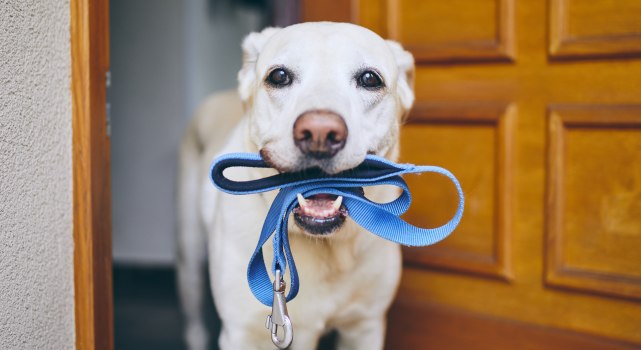When you think of the term “a trained dog,” the first idea that may come to your mind is a dog that can perform a sit/stay, roll over, or fetch. Teaching your dog to do tricks is fun, and having an obedient dog is rewarding for the owner, but what about the benefits to the dog? We know how training our dog can provide both fun and convenience to the pet owner, but what about the safety benefits? Can having a trained dog play a role in keeping your dog out of harm’s way?
Sophie Thomas is a professional dog trainer certified by the Animal Behavior College. She has years of experience with training dogs of all ages, breeds, and a variety of temperaments. While Sophie has seen many positive outcomes from canine obedience, she sees the safety component as one of the biggest benefits of having a dog that is trained.
“There are numerous safety benefits when it comes to training your dog,” Thomas says. “Training is WAY more than just tricks. In fact, most of the training that we do for pet owners is to keep them and their dogs safe.”
And while dog obedience can help train your dog to perform and exhibit a variety of tricks, commands, and behaviors, there are three, in particular, that can be lifesaving.

1. "Heel” & Loose Leash Walking
Veterinary emergency rooms are known for treating a variety of injuries that are obtained from dogfights, dogs being hit by cars, and even gunshot wounds. And while it’s certainly not the case for every situation, there are instances where having a leashed pet could have prevented some of these injuries.
Having a leash-trained dog is a safety benefit for the dog and the owner. For example, having a larger dog that pulls could accidentally pull both the dog and the pet owner into oncoming traffic. The dog could also pull hard enough that the owner could lose their grip on the leash entirely.
“At this point, anything can happen,” Thomas says. Your dog may get hit by a vehicle, run away, approach a dog that isn’t friendly or even approach a person that will feel the need to protect themselves from a strange dog running towards them. Not all people like dogs and not all dogs like other dogs.”
2. “Leave it”
As much as we love our dogs, we all know that they can have a wandering nose and get into things that they shouldn’t. So imagine this scenario. You’re in your bathroom taking a medication when you accidentally drop the pill onto the floor. Fido, who is your shadow and never leaves your side, hears and sees the pill tumble to the ground and goes straight for it. You try to tell him no and get to it before he does, but it’s too late. Fido swallows it.
“An important basic command everyone should teach their dog is “leave it,” Thomas says. “Leave it” simply means, whatever you are looking at or sniffing, disengage completely. This command can be a LIFESAVER. With all the trash, debris, and unidentified objects on the ground, there is no telling what your dog could ingest/swallow.”
3. “Come”
Having a dog that will come when he/she’s called can help prevent some disastrous situations. Specifically, Thomas reminds us that it can bring your dog back to you when they might be heading into trouble.
“If your dog pulls the leash from your hand, you can call him back to you. If your dog is sniffing an unidentified object on the ground, you can call him back to you. If your dog is chasing something heading towards a busy road, you can call him back to you. The list of safety benefits for this command can go on and on.”
In addition to these three basic commands and behaviors, Thomas adds that dog training can also help your dog’s veterinary visits go a little easier. Many dogs are stressed when they go to their veterinarian, and many commands and basic socialization skills can help to not only ease the stress, but make things like nail trims, medical procedures, and physical exams easier for both your dog and their doctor.
Thomas also adds that the old belief of “you can’t teach an old dog new tricks” is inaccurate.
“Whether your dog is six months or six years, they can still learn all of these things. Even if your dog has lived its entire life afraid of letting someone touch his paws, I believe he can still be taught to accept it.”
If your pet sustains an injury or ingests something that they shouldn’t, please consult with a veterinarian asap on the next step.
